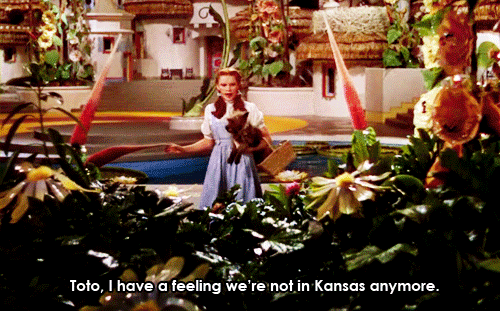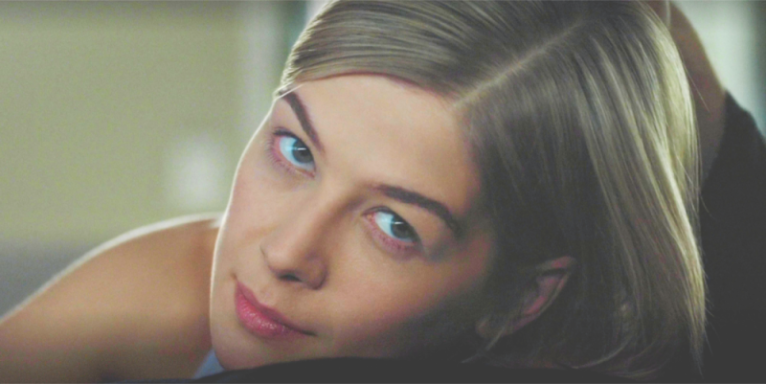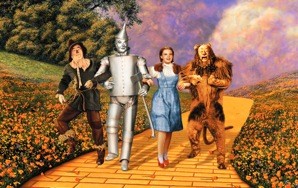
23 Surprising Facts About ‘The Wizard of Oz’ That Will Blow Your Mind
Fact: The Wizard of Oz has some of the wildest behind-the-scenes facts of any movie ever.
By ![]() Nico Lang
Nico Lang
The Wizard of Oz has one of the wildest and most infamous productions of any movie ever filmed. Did you know that half of the cast was either injured or nearly died during production, and one potential cast member did — before she was signed onto the film? Here are just 23 of the many, many weird little-known (and well-known) facts about everything that went wrong to give us a movie that was so right.
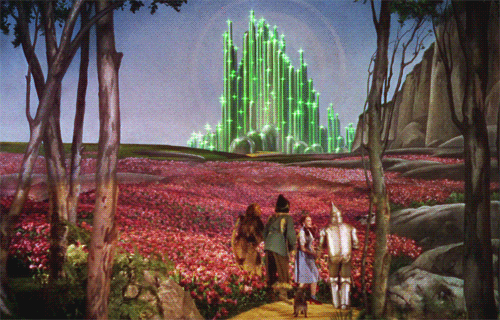
1. According to studio publicity, Dorothy Gulch was twelve-years-old, four years younger than the actress who played her, Judy Garland, even though author L. Frank Baum never gave her an actual age. To fit the character’s tween body, Garland had to wear a constricting corset to flatten her chest, a painful one that made it hard to breathe during filming. In an earlier adaptation of the film, Dorothy rang in her 18th birthday, just old enough to smoke, and the character would later be played by the 24-year-old Diana Ross and the 10-year-old Fairuza Balk.
2. Although Garland was always a favorite by the studio for the part, she was hardly the only actress considered. Shirley Temple was a better fit in terms of age and a much bigger star than Garland was at the time, but producers felt that she couldn’t carry the film vocally, as her singing voice left something to be desired. The other problem was that Temple was contracted to 20th Century Fox, and only would have been able to appear in the movie were she with MGM. The studio planned on trading her for Clark Gable and Jean Harlow — but the deal got nixed when Harlow unexpectedly died of liver failure at 26. Recent reports suggest that the toxicity of Harlow’s hair dye may have been partly to blame for her untimely death.
3. The film’s original director, Richard Thorpe, conceived an entirely different look for the film — in the whole two weeks he helmed the film. Thorpe’s footage shows Dorothy with more of a chic blonde hairstyle, described as “tousled,” and covered in babydoll makeup — like in John R. Neill’s original drawings for the books. In Thorpe’s version, Buddy Ebsen played the Tin Man, but Ebsen had to drop out because he was allergic to the silver powder in the Tin Man’s makeup, which Ebsen claimed “coated [his] lungs like paint.” After being sent to the hospital for two weeks due to respiratory problems (with six additional weeks to recuperate), Ebsen had been replaced. Jack Haley was now in the tin suit. Interestingly, Haley’s son would marry Liza Minnelli in the 70s.
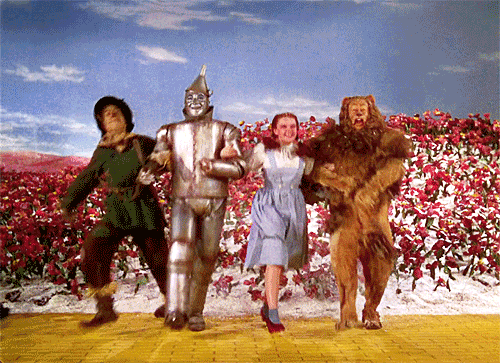
4. Haley didn’t have a much easier time with his costume. In addition to getting an eye infection from the makeup, the get up for the Tin Man was incredibly stiff, in order to resemble tin. If Haley wanted to take a rest in the costume, he had to lean against something instead of sitting down. He could have just napped on the ground, but he wouldn’t have been able to get up.
5. After Thorpe was jettisoned, George Cukor was brought in as a temporary director while the studio could find a permanent replacement for Thorpe. Cukor, a director known for working well with women (read: big homosexual), threw out the blonde wig, giving Dorothy a more “natural” look. He wanted her down-to-earth radiance to be a counterpoint to the fantasy of Oz, giving the audience an emotional anchor to carry them through the film. But Cukor had no interest in directing the movie long-term. He was holding out for Gone with the Wind, which ended up being directed by Victor Fleming, the eventual director of Oz. (Oops.) Cukor did, however, work with Garland again in A Star is Born, the movie that got the actress her Oscar nod.
6. All in all, five different directors were brought on board to the film — with 14 different writers tasked to bring the book to life. At one point, poet Odgen Nash had written a screenplay for the film.
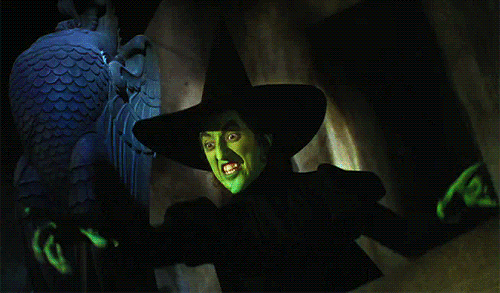
7. Because of the number of director changes and redesigns to the film, the film ended up experiencing a number of delays in the production and far, far overshot its intended budget. Although The Wizard of Oz has rumored to have been a flop upon release (like Bringing Up Baby), that’s not exactly true. The movie made $3 million at the time, a slim $300,000 over its budget, the highest ever for its studio. However, The Wizard of Oz ended up being the third biggest hit of the decade, behind Gone With the Wind and Snow White and the Seven Dwarves, grossing $16 million in total. This is still pennies compared to Gone with the Wind, which would have made the equivalent of $1.6 billion today, just in the U.S. alone. Eat that, James Cameron.
8. A number of changes were made from the novel. In the book, Glinda is the Good Witch of the South, not the North, and Oz is a real place, not just Dorothy working out her Freudian issues in her dreams. L. Frank Baum also gave Dorothy silver slippers instead of ruby ones, but MGM studio head Louis B. Mayer decided to make them brighter to get the most out of the new Technicolor technology. White was also difficult to shoot in technicolor, so Dorothy’s shirt was actually a light shade of pink to make it more filmable.
9. The Emerald City wasn’t exactly emerald in the novel. In the original text, the characters are required to wear glasses that make everything appear green even though the city is “no more green than any other city.” The green is a deception, like the wizard’s many other tricks, referred to as “humbugs” in the novel. The city’s conception is said to be inspired by the famous White City at the Chicago World’s Fair.
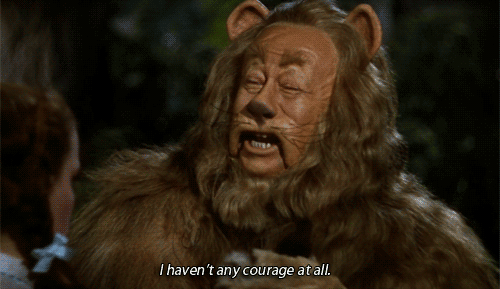
10. In the novel, the Wicked Witch has a much smaller role, but her part was greatly pumped up in the movie in order to give the film more of a dramatic arc, whereas Baum’s narrative was episodic. Originally the character was going to be beautiful (or “sleek and sexy”), but producers nixed that, as it clashes with idea of “evil” witches being ugly. The original choice, the gorgeous Gale Sondergaard, immediately dropped out when she saw herself uglied up, and Margaret Hamilton took the role instead. She was so good at being ugly that much of Hamilton’s screen time ended up being cut. Hamilton and the execs through the character was too scary for young audiences, and despite the movie’s cult popularity, Hamilton refused to do a sequel for that very reason.
11. Despite refusing a sequel, Margaret Hamilton was in love with her part, a lifelong fan of the books on which the film was based. When her agent told her she was up for the movie, Hamilton wanted to know which part she might have the chance to play. The agent scoffed, “The wicked witch, what else?” Hamilton grew so attached that when Frank Morgan, who played the Wizard, gave Dorothy’s friends their famous gifts out of his special bag, the actress began to cry. She was close with Morgan and knew that’s just the kind of person he was all the time, kind and generous. According to Hamilton’s son, the actress loved to use the “I’ll get you my pretty line” off set.
12. The Scarecrow, Cowardly Lion and Tin Man, like the Wicked Witch, also had a problem of scaring people with their costumes. Their getups were considered so frightening that Ray Bolger, Bert Lahr and Jack Haley were banned from the MGM lunch room, not allowed to eat with the rest of the cast. They were forced to lunch in their dressing rooms, in case they alarmed other MGM workers.
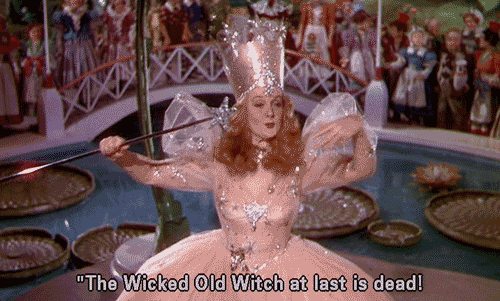
13. The Wizard of Oz makes Dorothy into an innocent damsel in distress, who gets in over her head in Oz in order to learn a lesson about family, one that convinces her to go back home. However, the books paint Oz as a credible refuge for Dorothy and make Dorothy into a much stronger character. Instead of constantly being saved by those around her, Dorothy does the rescuing. A feminist himself, Baum wanted Dorothy to come across as a strong heroine for his young female audience.
14. The Wizard of Oz is notable for the wild number of mistakes in the movie. For instance, you can see Dorothy’s hair consistently change lengths throughout the movie. Because of the excessive lighting necessary to shoot in Technicolor — which made the set upwards of 100 degrees — the studio lights often reflect in shiny surfaces throughout the film, like glass or the Emerald City floor. Props also change or disappear, like the bouquet from the Munchkins that vanishes into thin air or when the Tin Man’s spear magically turns into an ax. The film also carries one giant gap of logic: You’re a witch. Water kills you. Why then would you choose to live somewhere surrounded by a moat and have buckets of water laying around?
14. Depending on who you ask, there’s a scene where either a Munchkin or a disgruntled crew member is hanging himself in the background in the trees. However, none of these are the case. At the time of filming, MGM rented somewhere around 400 birds from the local zoo to use in their films, but many of the birds had escaped their cages. A number of them ended up on set, including a large crane that you can see stretching out its wings in the background. However, the Munchkins were paid only $50 per week, $75 less than Toto, so they would have had a reason to be upset. (Toto also made more per week than most Americans did in the 1930s.) Hollywood later made it up to the Munchkins, when they were awarded stars on the Hollywood Walk of Fame.

15. Judy Garland grew so attached to Terry, the animal actor that played the role of Toto, during filming and begged his owners to let her adopt the dog. This was for a couple reasons. First, they obviously liked the dog. Second, they were likely anxious to have her back after the dog almost died on set — one of the witch’s guards accidentally stepped on her. Terry’s leg was broken and had to be replaced with a dog double while she healed. Terry’s earliest screen role was in a Shirley Temple movie, as “Terry,” but after Wizard of Oz, her owners changed her name to “Toto” because of the character’s iconic status. Toto later appeared in George Cukor’s The Women and Tortilla Flat, which was directed by Victor Fleming and starred Frank Morgan, who played the Wizard. Terry/Toto died in 1945 of old age, laid to rest in her trainer’s backyard.
16. Margaret Hamilton was nearly burned to death on set. The actress was sent to the hospital after being severely burned a explosion that misfired. Hamilton was intended to vanish in a giant puff of smoke, but her trapdoor misfired. In another take, Hamilton is supposed to get burned by Dorothy’s ruby red slippers when the Witch attempts to remove them from her feet, but the sparks were simulated by squirting out apple juice instead. To make the juice appear more flame-like, the production team merely sped up the film. In another scene, Hamilton asked to use a stand-in to fly on a broom for her, as smoke billowed out of it. The stand-in was badly injured.
17. In addition to Hamilton’s near death, the actors who played the flying monkeys were all badly injured during the “Haunted Forest” scene. The string that held them aloft snapped and the monkeys fell to the ground. This is what happens when trust piano wire to hold up a human person. Luckily it wasn’t that far to the floor of the sound stage and no one died.
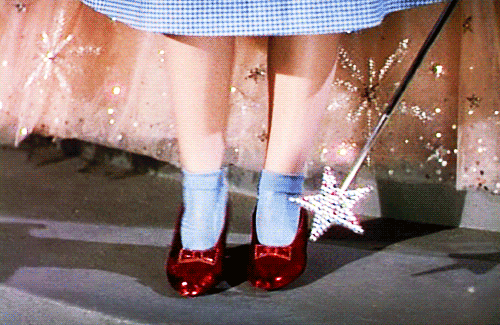
18. “Heavens to Murgatroyd!” became associated with Snagglepuss, the cartoon cat created by Hanna Barbera in the late 1950s. The phrase is associated with Bert Lahr, who played the Cowardly Lion, and it made its way into film in the 1944 movie, Meet the People. Snagglepuss popularized it, and his voice was even based on Lahr’s. If you’re confused as to what a “Murgatroyd” is in the first place, it’s an old English surname — and also sounds like robot language.
19. Many iconic scenes were nearly cut from the movie because the original running time was way too long. At a hefty 120 minutes, producers realized that the film needed 20 minutes axed to get down to a reasonable duration, and Meryvn LeRoy chopped off the “Over the Rainbow” number. The producers thought it made the scenes in Kansas dragged and that its young audience wouldn’t understand the message of the song. They were also apprehensive about letting Garland sing in a barnyard, calling it “degrading.” However, they split the difference, cutting a reprise of the song instead, when Dorothy is imprisoned in the Wicked Witch’s lair. When Garland sang that version, both she and the rest of the cast began to weep, because the tune and scene were so depressing.
20. It’s long been rumored that Judy Garland began her problems with substance abuse on the set of The Wizard of Oz, because of the tumultuous production and publicity about her drinking problems. However, unlike Drew Barrymore, who started from a very young age, Garland’s drinking and addictions didn’t become a “problem” for the studio until the 40s, when she had a nervous breakdown while filming The Pirate. Garland was sent to a sanitarium. Because of her numerous suicide attempts, Garland was stated to have a borderline personality disorder.
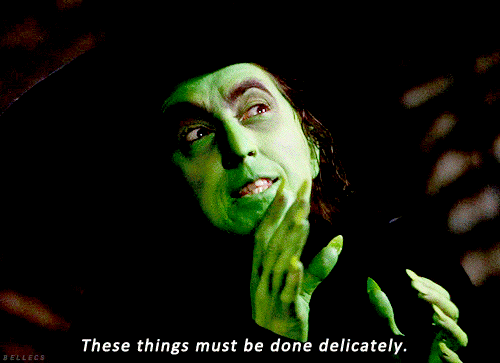
21. Garland had a difficult time with the scene where she has to slap the Cowardly Lion, as she kept laughing. To help get her into the scene, Victor Fleming dragged her aside and smacked her across the face. Garland quit giggling. She came back and nailed the scene in her first attempt.
22. This one sounds like crap, but it’s true. The costume designers’ working on Professor Marvel’s look wanted a fashionable looking coat that had become worn over time, vintage but slightly ratty. To get the coat exactly right, the crew selected a plethora from a local thrift store until everyone found one they agreed was perfect. It fit Frank Morgan — who played both the Wizard and his Kansas doppleganger, Marvel — perfectly. One day on set, Morgan found a small label inside the jacket that had the name L. Frank Baum etched into it. The coat had been fitted and tailored for Baum, then living in Chicago. The producers gifted it to the author’s widow after the production concluded.
23. By far, the most famous piece of trivia about the movie has nothing to do with the movie itself but Pink Floyd’s Dark Side of the Moon, which matches up nearly perfectly with the film (despite different in lengths). To sync up the two, you want to start the album when the MGM lion roars. (I suggest the third roar.) Called “The Dark Side of the Rainbow,” the correlation received major press coverage in the mid-90s, but Pink Floyd have long denied that the mashup was intentional, (and they are likely telling the truth, as it would have been much more difficult to pull off before the invention of the VCR). Some Pink Floyd members have gotten angry about the audience’s insistence on correlation. But Nick Mason, the band’s drummer, was a good sport, joking to MTV: “It’s absolute nonsense. It has nothing to do with The Wizard of Oz. It was all based on The Sound of Music.” ![]()
